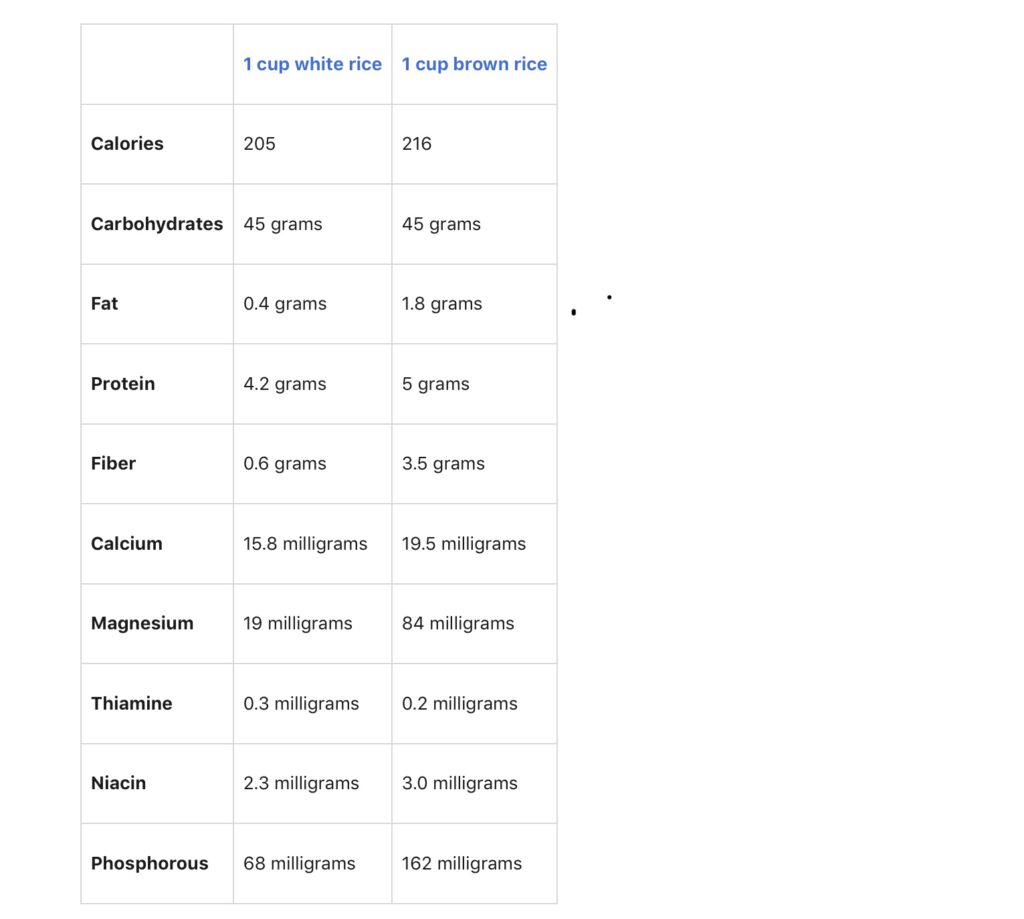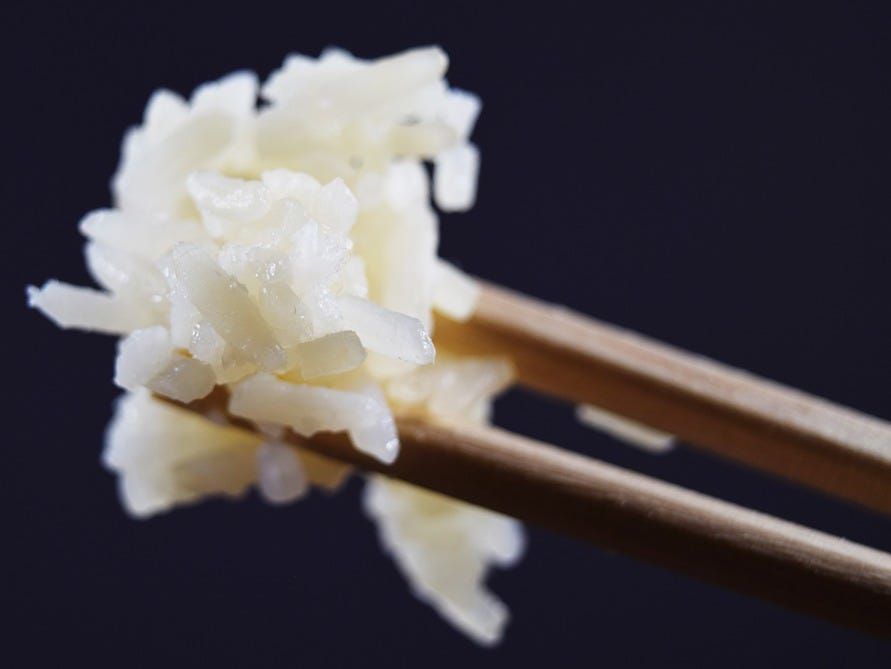Shaena Montanari
- White rice is highly processed and can spike blood sugar levels, which may increase the risk of diseases like diabetes if eaten regularly, like every day.
- Because of how the body processes white rice, Harvard Medical School has said that it has the same effect as eating “pure table sugar,” which is not great for overall health.
- It’s not as healthy to eat white rice as it is to eat brown rice or less processed alternatives that contain more nutrients, protein, and fiber.
- This article was medically reviewed by Lisa Defazio, a registered dietitian and nutritionist in Los Angeles.
- Visit Insider’s Health Reference library for more advice.
More than half of the world’s population relies on rice as a staple food. In 2018, 485 million metric tons of rice were produced globally.
White rice is much more common than brown rice because it has a longer shelf life and transports more easily. However, white rice is also less nutritious. Here’s what you need to know.
The difference between white and brown rice
White and brown rice are not different species. In fact, most of the rice we eat is the same species — Oryza sativa. The difference is that brown rice has two distinctive parts that white rice lacks.
- The bran, which is the outer edible layer of the rice grain.
- The germ, which is the reproductive part of the grain.
These not only give brown rice its color, but they’re also the most nutrient-dense parts of rice. One downside is that the fat in the bran and germ makes brown rice spoil more quickly than white rice. The average shelf life for brown rice is about six months.
By contrast, white rice is what’s left behind after the grain is polished and the bran and germ are removed. This makes white rice cook faster and gives it a longer shelf life. It also means that white rice contains fewer nutrients than brown rice.
But this does not mean that white rice is inherently bad for you, though it is less healthy, says Elizabeth Ryan, a researcher at Colorado State University who studies the nutrients in rice bran.
“At the end of the day, eating whole grains is always going to be important,” Ryan said.
In fact, when you get rid of the bran and germ in rice, here’s what you’re really removingnutrition-wise:
- Calcium, which is important for teeth and bone health.
- Fat, which consists of healthy unsaturated fats that are important for cardiovascular health.
- Phosphorus, which collaborates with calcium to form strong bones and teeth.
- Vitamins B1 (thiamine) and B3 (niacin), which helps keep the nervous systemfunctioning properly.
- Protein, which helps build muscle and is essential for growth and development.
- Magnesium, which is important for proper neurological function, among many other benefits.
For comparison, here’s how much nutrition you get from a cup of cooked white rice versus brown.
For comparison, here’s how much nutrition you get from a cup of cooked white rice versus brown.

Benefits of eating brown rice instead of white
Ryan is specifically interested in the disease-preventing and nutritional benefits of eating rice bran. Her research has shown that nutrients in rice bran could help protect against colorectal cancer. The bran makes brown rice rich in compounds called phytochemicals that have antioxidant and anti-inflammatory properties.
“There’s a lot of phytochemicals in brown rice that are not in white rice,” she says.
Brown rice has more soluble and insoluble fiber and protein than white rice. This fiber is a good prebiotic, Ryan says, which means it helps feed a healthy gut microbiome. And a healthy gut microbiome is essential for myriad functions, including digestion and a strong immune function.
While most of the calories in white and brown rice come from carbohydrates, white rice has a higher glycemic index than brown rice. This means that a serving of white rice provides a quicker blood sugar spike, which, according to Harvard Medical School, “has almost the same effect as eating pure table sugar.” Brown rice has a lower glycemic index, which is better for warding off diseases like diabetes.
Overall, Ryan says that when out grabbing lunch and offered the option of white rice or brown, “if there’s an opportunity to substitute it with brown rice, you are improving your whole-grain intake.”
White and brown rice contain traces of arsenic
In the past decade, rice has gotten attention for being a grain that is naturally contaminated with arsenic, a carcinogen.
In 2012 Consumer Reports tested brown rice, white rice, and rice products available in the supermarket and found a wide variety had measurable levels of arsenic in them. In a follow-up, in 2014, it reported that one serving of many rice cereal and pasta products contained “over the maximum amount of rice we recommend they should have in a week.”
Both white and brown rice contain arsenic from the environment. The amount of arsenic that is incorporated into the rice depends on how much of the element is in the soil, which varies regionally. For example, Consumer Reports found the lowest levels of arsenic in basmati rice from California, while the highest levels were in rice from Texas.
In 2016, the Food and Drug Administration issued draft guidance to manufacturers to limit arsenic in rice cereal for infants. The FDA recommends that adults and children continue to eat rice products, but make sure they are also eating a varied diet of whole grains like wheat, oats, and barley, saying that “if there are substances in food (like arsenic) where reducing exposure is prudent, you’re minimizing that exposure.”
Washing brown rice, cooking it in extra water, and then rinsing it again will get rid of around 50% of arsenic, but will also wash away some of the more beneficial nutrients.
Related articles from Health Reference:
- How to lose weight and keep it off with the right diet and mindset
- Is pasta healthy? Types, benefits, and prep
- What is resistant starch, and is it healthier than simple starch?
- The different types of carbs, and how they can affect your health
Read the original article on Insider














